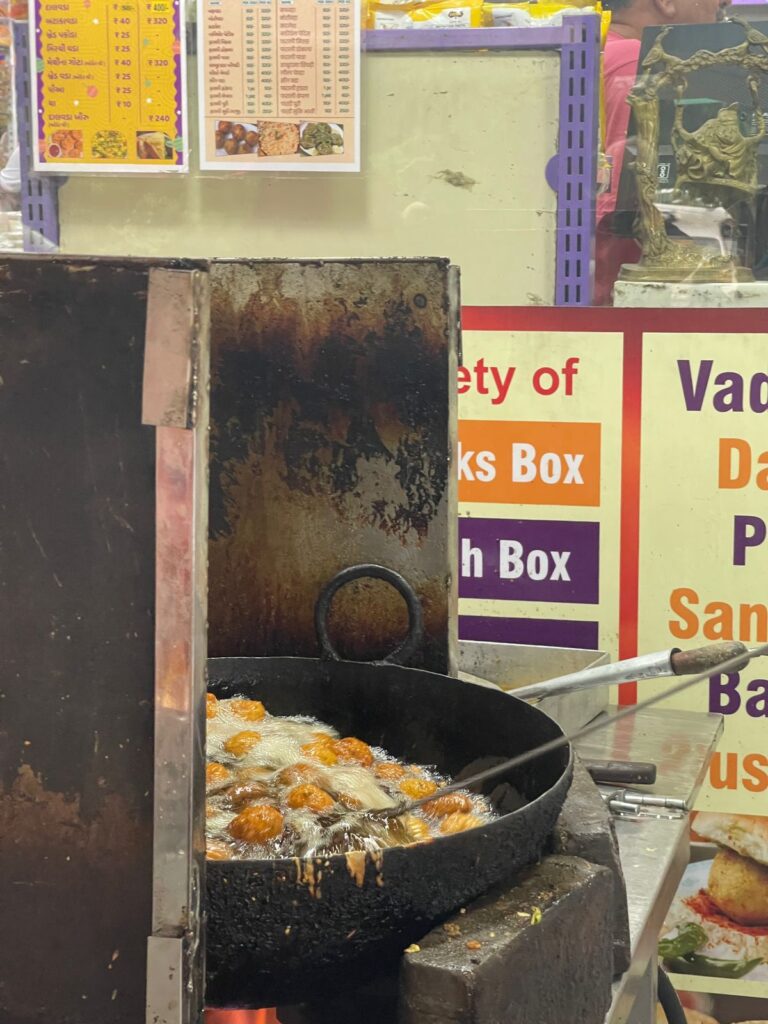Ghughra: A Delightful Diwali Delicacy and Ghughra Recipe
As Diwali approaches, homes are filled with the delightful aroma of traditional sweets and snacks that mark the festivities. Among these, ghughra, also known as karanji or gujiya in different parts of India, holds a special place in the hearts of Gujaratis. This crescent-shaped sweet treat, filled with a delectable mixture of dry fruits, coconut, and jaggery, is an essential part of Diwali celebrations. Ghughra not only adds sweetness to the festive platter but also embodies the warmth and tradition passed down through generations.
In this blog, we’ll explore the significance of ghughra during Diwali and guide you through the steps to make this delicious delicacy at home.
The Cultural Significance of Ghughra During Diwali
Ghughra has long been a Diwali favorite, especially in Gujarat, where it’s prepared with love and shared with friends and family. The sweet is often associated with prosperity and abundance, symbolizing the wealth and good fortune that Diwali celebrates. The preparation of ghughra is a family activity, with everyone coming together to help in the kitchen, from rolling the dough to shaping the sweets.
This ritual not only strengthens family bonds but also revives the ancient tradition of handcrafting festive treats rather than relying on store-bought sweets. Sharing ghughra with neighbors and guests is a common practice during Diwali, spreading the joy and spirit of the festival.
The Recipe: How to Make Traditional Ghughra
Making ghughra at home can be a fulfilling experience, allowing you to customize the filling to suit your taste. While the traditional filling consists of coconut, dry fruits, and jaggery, you can experiment with various ingredients like khoya (mawa), semolina, or even chocolate to give it a modern twist.
Here’s a simple and traditional ghughra recipe that you can try this Diwali:
Ingredients for Ghughra:
For the dough:
- 2 cups all-purpose flour (maida)
- 2 tbsp ghee (clarified butter)
- Water (as needed to knead the dough)
- A pinch of salt
For the filling:
- 1 cup desiccated coconut (or freshly grated coconut)
- 1 cup powdered sugar (or jaggery)
- ¼ cup mixed dry fruits (almonds, cashews, and raisins)
- 1 tsp cardamom powder
- 2 tbsp semolina (optional for added texture)
- 2 tbsp ghee (for roasting)
For frying:
- Oil or ghee (for deep frying)
Step-by-Step Recipe:
- Prepare the Dough:
- In a large mixing bowl, add all-purpose flour, a pinch of salt, and 2 tablespoons of ghee.
- Rub the ghee into the flour with your fingers until it forms a crumbly texture.
- Gradually add water and knead the mixture into a smooth, firm dough. Cover it with a damp cloth and let it rest for 20-30 minutes.
- Make the Filling:
- In a pan, heat 2 tablespoons of ghee and lightly roast the semolina until it turns golden brown (this step is optional).
- Add the desiccated coconut and continue roasting for a few minutes until it emits a fragrant aroma.
- Remove the mixture from heat and let it cool slightly.
- Once cooled, mix in the powdered sugar or jaggery, chopped dry fruits, and cardamom powder.
- Shaping the Ghughra:
- Divide the dough into small equal portions and roll each portion into a ball.
- Flatten each ball into a thin circle (about 4-5 inches in diameter) using a rolling pin.
- Place 1-2 teaspoons of the prepared filling in the center of each circle.
- Fold the dough over the filling to form a half-moon shape. Press the edges firmly to seal and crimp them, either with your fingers or a fork, to ensure the filling doesn’t leak out during frying.
- Frying the Ghughra:
- Heat oil or ghee in a deep frying pan over medium heat.
- Once the oil is hot, gently slide in the ghughra and fry them in batches until they turn golden brown and crisp.
- Remove them from the oil and drain on a paper towel to absorb excess oil.
- Serve and Store:
- Allow the ghughra to cool completely before serving. These sweet treats can be stored in an airtight container for up to two weeks, making them perfect for sharing during the Diwali season.
Variations of Ghughra
While the traditional ghughra recipe is a classic, there are many variations you can try to suit your taste preferences:
- Khoya Ghughra: Replace the coconut filling with sweetened khoya (mawa) for a rich, creamy texture.
- Chocolate Ghughra: Add a modern twist by mixing some chocolate chips or cocoa powder into the filling.
- Savory Ghughra: If you prefer a savory snack, you can substitute the sweet filling with a spicy mixture of potatoes, peas, and spices, similar to a samosa.
Tips for Making the Perfect Ghughra
- Dough Consistency: The dough should be soft but firm enough to hold the filling without tearing. Make sure to knead it well and let it rest to get the perfect consistency.
- Filling Quantity: Avoid overfilling the ghughra, as it can cause the dough to break while frying. A small spoonful of filling is sufficient.
- Sealing the Edges: Ensure that the edges of the ghughra are sealed properly to prevent the filling from leaking during frying. You can use a little water or milk to seal the edges securely.
- Frying Temperature: Fry the ghughra on medium heat to ensure they cook evenly and become crisp without burning. Frying on high heat can cause them to brown too quickly on the outside while remaining uncooked inside.
Try our Ghughra recipie
Ghughra is more than just a sweet treat; it is a symbol of togetherness, joy, and the rich culinary traditions of Diwali. Whether you’re a seasoned cook or trying your hand at making festive sweets for the first time, this recipe is sure to add sweetness to your celebrations. The combination of the crisp outer shell and the flavorful filling will make ghughra the star of your Diwali spread.
So, gather your ingredients, roll up your sleeves, and get ready to make this traditional delicacy that has been loved for generations. And remember, it’s not just about the final product; it’s about the joy of making it with your loved ones and sharing it during this festive season.













